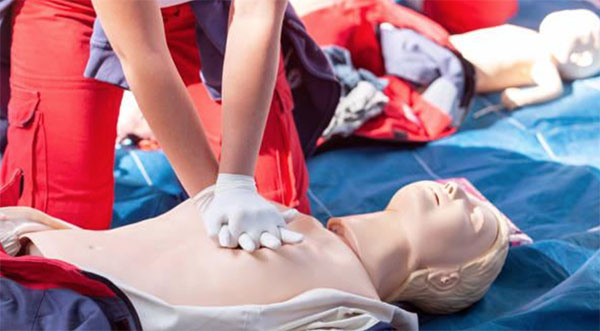Mastering First Aid and CPR Online: Essential Skills for Canadians
By Space Coast Daily // April 2, 2024

In the unpredictable dance of daily life, emergencies can strike at any moment. Being equipped with the knowledge and skills to respond to such situations can mean the difference between life and death.
For Canadians, mastering first aid and CPR—a vital combination of emergency procedures—has become more accessible than ever before, thanks to online certification courses. This article guides you through the essential skills imparted by these courses, their importance in the fabric of Canadian communities, and how you can easily acquire them from the comfort of your home.
The Imperative of Learning First Aid and CPR
First aid and cardiopulmonary resuscitation (CPR) are critical skills that anyone, regardless of their profession or background, can use to save lives. Emergencies, such as heart attacks, choking, or severe injuries, require immediate attention, and often, medical professionals are not the first on the scene. Knowing what to do in the precious first minutes can stabilize victims and prevent further harm.
In Canada, where expansive landscapes and varied climates contribute to a multitude of possible accidents—from hiking mishaps to winter-related falls—first aid and CPR knowledge is especially crucial. This knowledge not only empowers individuals but also strengthens the communal safety net, ensuring that whether in busy city streets or remote rural areas, a guardian angel may be just around the corner.
Online First Aid and CPR Courses: Flexibility and Accessibility
Recognizing the importance of these skills, numerous Canadian organizations now offer first aid and CPR training online. This digital approach accommodates the busy lives of Canadians, providing flexibility in learning pace and environment. Courses typically cover a range of topics, including but not limited to responding to bleeding, burns, fractures, cardiac events, and respiratory emergencies.
These online programs often consist of interactive modules, videos, and virtual demonstrations. While the theory can be mastered online, hands-on CPR training is essential. Hence, many courses offer a hybrid model where participants can complete theoretical components online before attending in-person sessions for practical skills. This combination ensures that participants have both the knowledge and the confidence to perform life-saving techniques when required.
Curriculum and Certification Standards
The Canadian Red Cross, St. John Ambulance, and Heart and Stroke Foundation are among the reputable organizations that follow Health Canada’s guidelines for first aid and CPR training. The curriculum includes everything from basic first aid and managing respiratory emergencies to more advanced techniques like automated external defibrillator (AED) usage.
Certifications are typically valid for a period of up to three years, after which a refresher or re-certification course is required. This is to ensure that individuals are up-to-date with the latest guidelines and techniques, as medical practices evolve rapidly. It’s important for prospective learners to choose courses that are nationally recognized and meet the standards of provincial and territorial legislation.
Practical Benefits and Real-Life Application
Beyond the intrinsic value of being prepared for emergencies, there are practical benefits to having a first aid and CPR certification. For instance, many employers in Canada favor or even require this certification for employees, especially those working in environments where accidents are more prevalent. Educators, coaches, and community leaders particularly find this training indispensable.
Moreover, the confidence gained through certification can be significant. Studies have shown that trained individuals are more likely to respond and offer help in emergency situations compared to untrained bystanders. This response can dramatically improve the outcomes for victims; for cardiac arrest victims, early CPR and defibrillation can double, if not triple, survival rates.
Maintaining Skills and Staying Informed
To keep your first aid and CPR skills sharp, it’s recommended that you regularly review your course materials and stay informed of any updates or changes in protocols. Many organizations provide online resources and refresher quizzes. Practice sessions, even if performed at home with the aid of tutorials and dummies, can help maintain muscle memory for physical procedures like chest compressions.
Conclusion
Mastering first aid and CPR online provides Canadians with an essential toolkit that extends beyond personal knowledge—it’s a societal contribution, a way to take active responsibility for the wellbeing of those around us. In a nation characterized by its community spirit and readiness to help, these skills naturally align with Canadian values.
The digital landscape has paved the way for greater accessibility, ensuring that these life-saving techniques can be learned by a wider audience, unhindered by geographical or time constraints. With the resources available today, obtaining and maintaining first aid and CPR certification online is convenient, and often, the cost is a small investment for the immeasurable value it may hold one day.
In moments of crisis, the knowledge of first aid and CPR can turn an ordinary citizen into a hero. It’s in the mastery of these skills that Canadians can not only safeguard their families and friends but also fortify the very heart of their communities. Whether through the click of a mouse or the compression of a chest, the power to save lives is at our fingertips—and it’s our collective responsibility to embrace this power, ensuring that when emergencies arise, we’re not helpless but ready to act with confidence and care.












